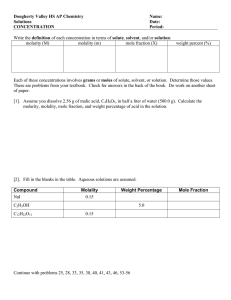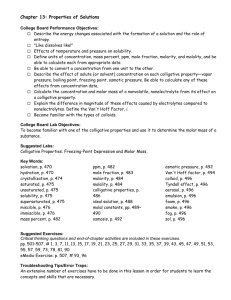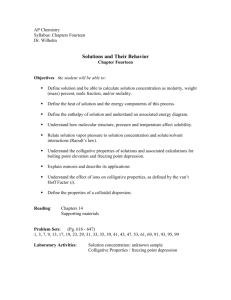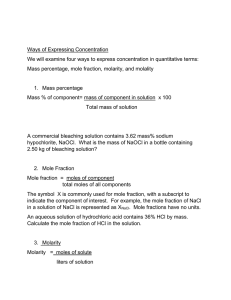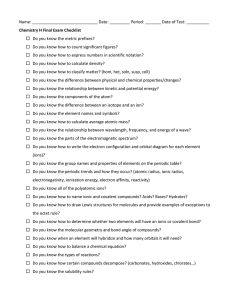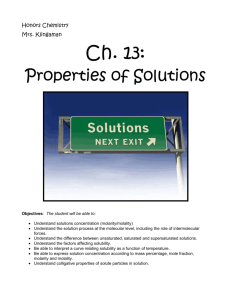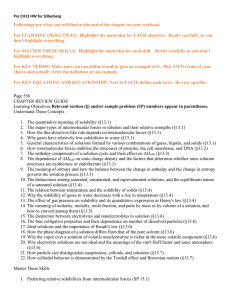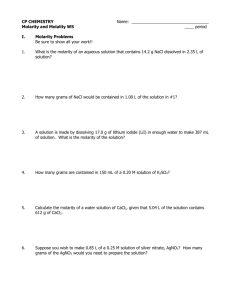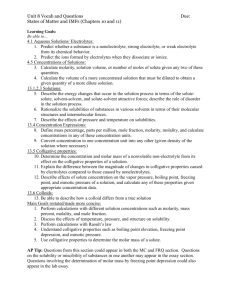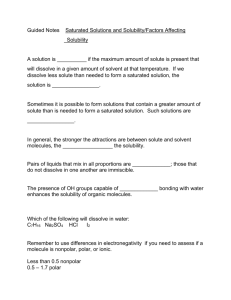Learning Objectives and Reading for Lectures 16-18
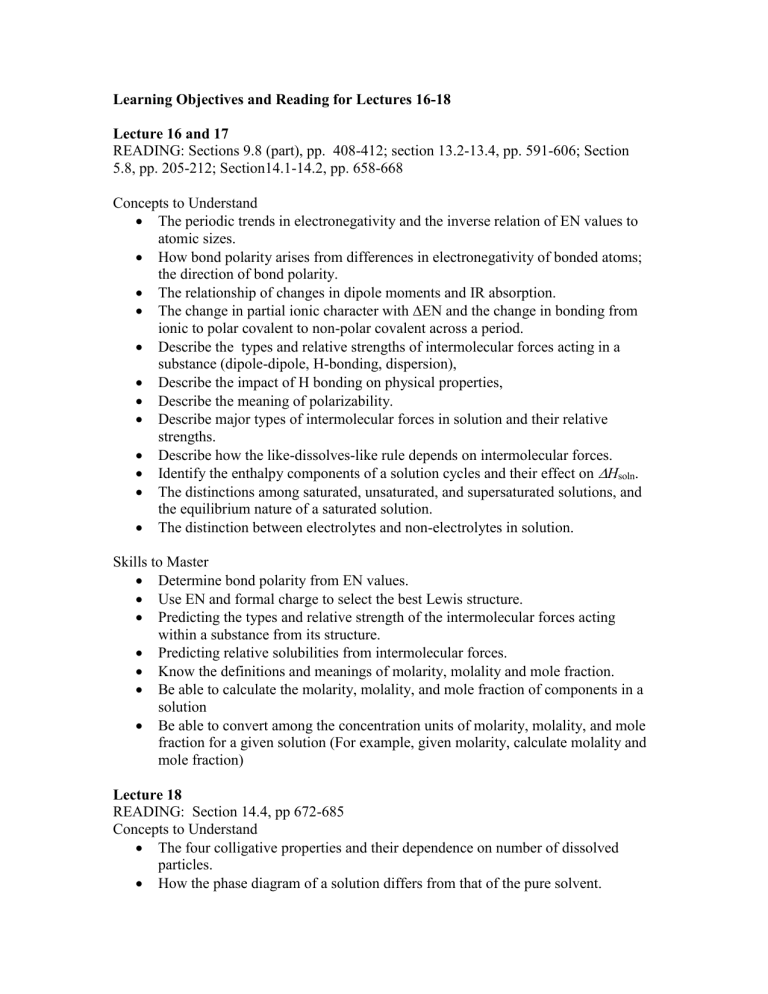
Learning Objectives and Reading for Lectures 16-18
Lecture 16 and 17
READING: Sections 9.8 (part), pp. 408-412; section 13.2-13.4, pp. 591-606; Section
5.8, pp. 205-212; Section14.1-14.2, pp. 658-668
Concepts to Understand
The periodic trends in electronegativity and the inverse relation of EN values to atomic sizes.
How bond polarity arises from differences in electronegativity of bonded atoms; the direction of bond polarity.
The relationship of changes in dipole moments and IR absorption.
The change in partial ionic character with
EN and the change in bonding from ionic to polar covalent to non-polar covalent across a period.
Describe the types and relative strengths of intermolecular forces acting in a substance (dipole-dipole, H-bonding, dispersion),
Describe the impact of H bonding on physical properties,
Describe the meaning of polarizability.
Describe major types of intermolecular forces in solution and their relative strengths.
Describe how the like-dissolves-like rule depends on intermolecular forces.
Identify the enthalpy components of a solution cycles and their effect on
H soln
.
The distinctions among saturated, unsaturated, and supersaturated solutions, and the equilibrium nature of a saturated solution.
The distinction between electrolytes and non-electrolytes in solution.
Skills to Master
Determine bond polarity from EN values.
Use EN and formal charge to select the best Lewis structure.
Predicting the types and relative strength of the intermolecular forces acting within a substance from its structure.
Predicting relative solubilities from intermolecular forces.
Know the definitions and meanings of molarity, molality and mole fraction.
Be able to calculate the molarity, molality, and mole fraction of components in a solution
Be able to convert among the concentration units of molarity, molality, and mole fraction for a given solution (For example, given molarity, calculate molality and mole fraction)
Lecture 18
READING: Section 14.4, pp 672-685
Concepts to Understand
The four colligative properties and their dependence on number of dissolved particles.
How the phase diagram of a solution differs from that of the pure solvent.
Why electrolyte solutions are not ideal and the meanings of the van’t Hoff factor and ionic atmosphere.
Skills to Master
Using Raoult’s law to calculate the vapor pressure lowering of a solution.
Determining bp elevation and fp depression of a solution.
Using a colligative property to calculate the molar mass of a solute
Calculate the composition of vapor over a solution of a volatile non-electrolyte.
Calculating the van’t Hoff factor I from the magnitude of a colligative property.

